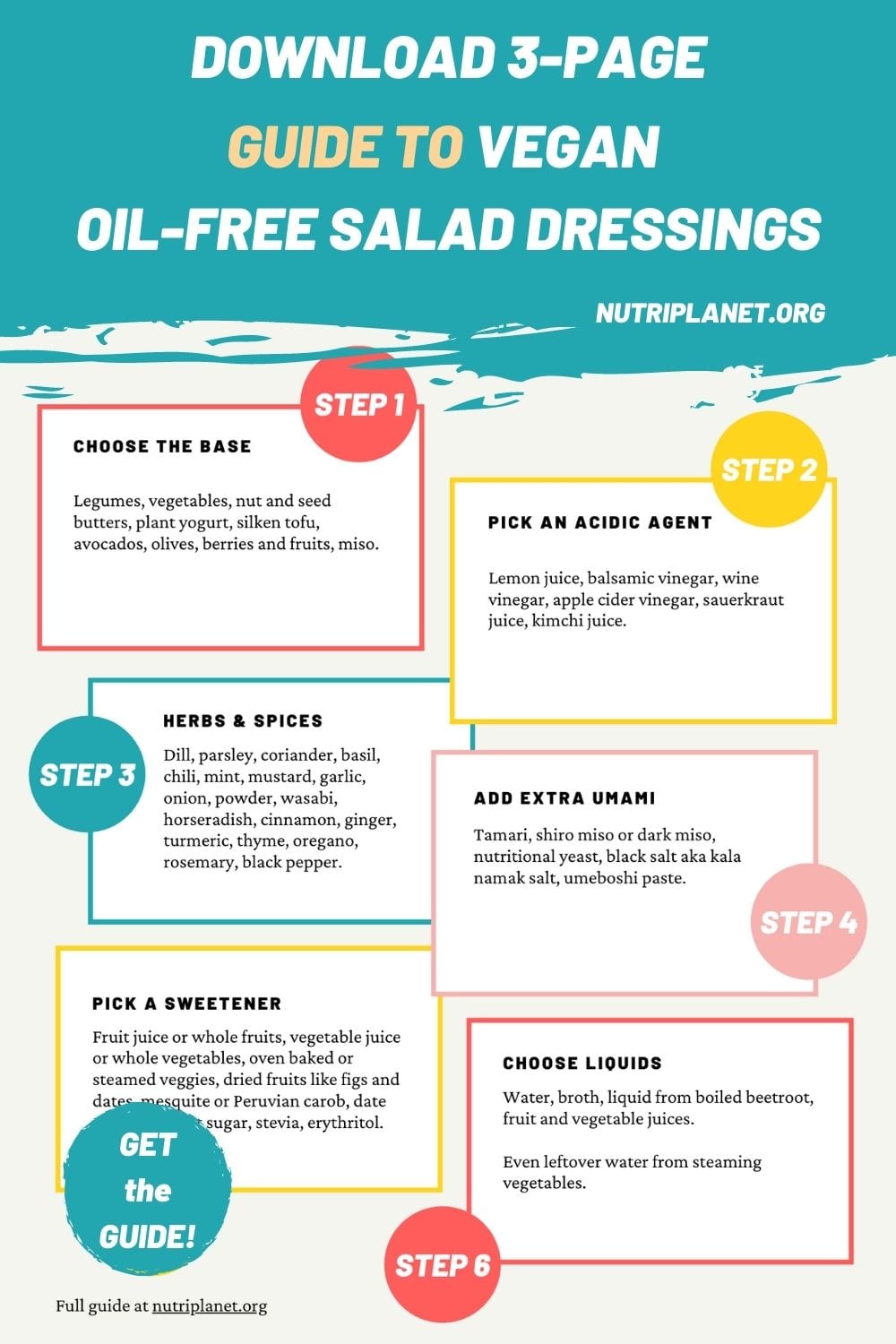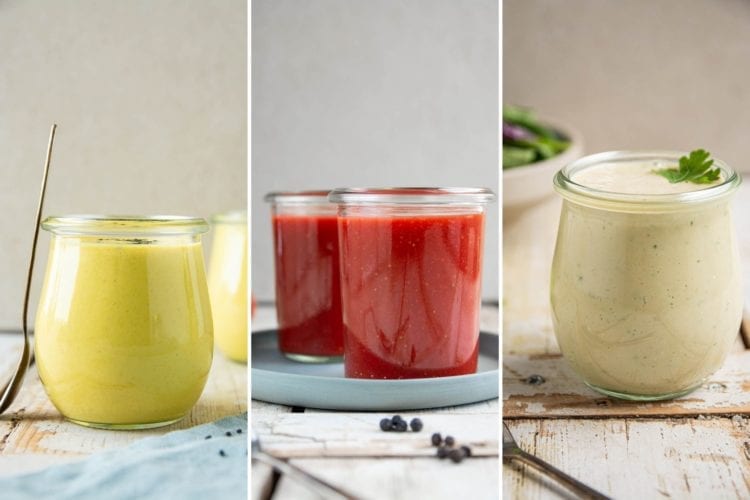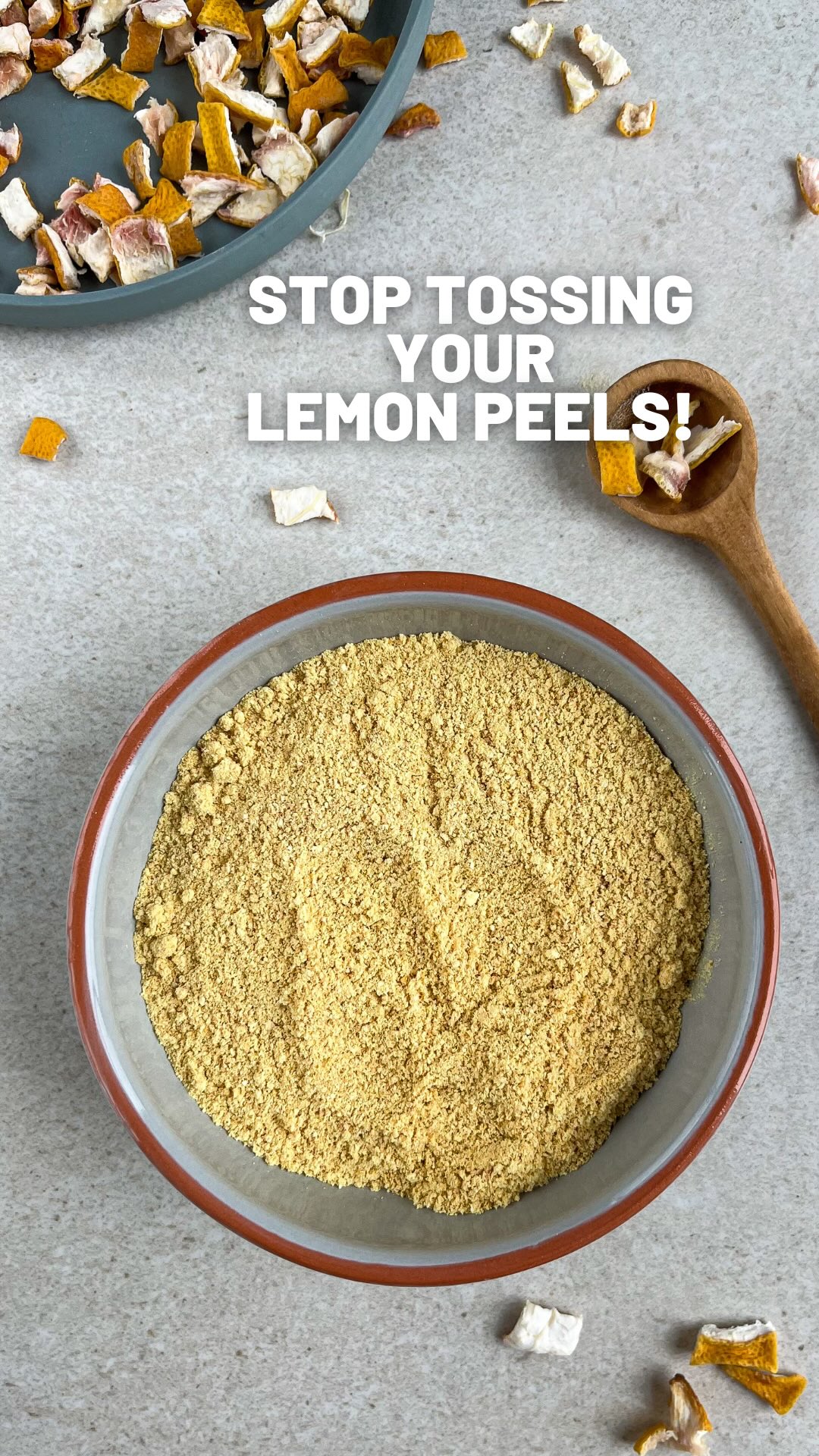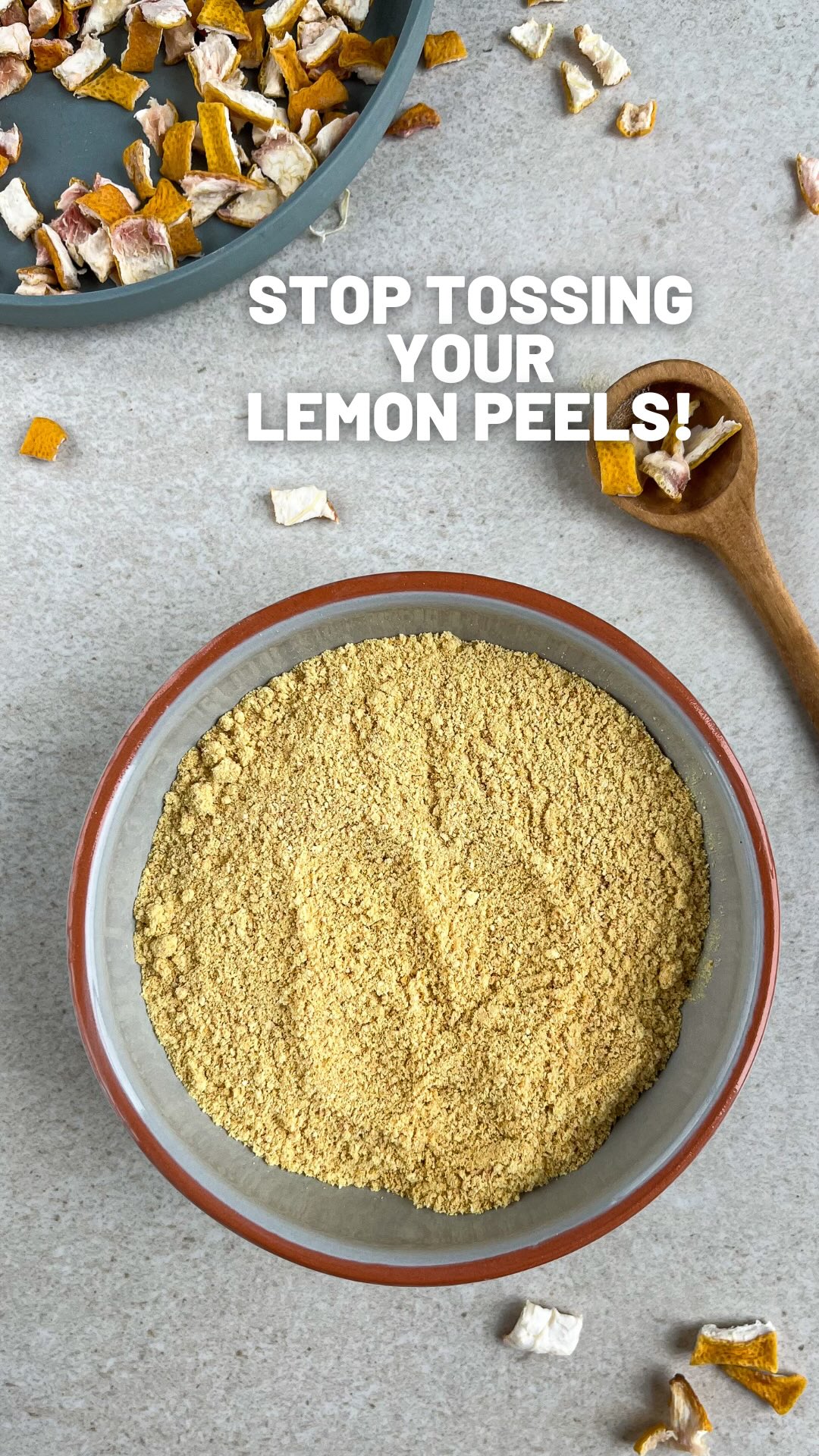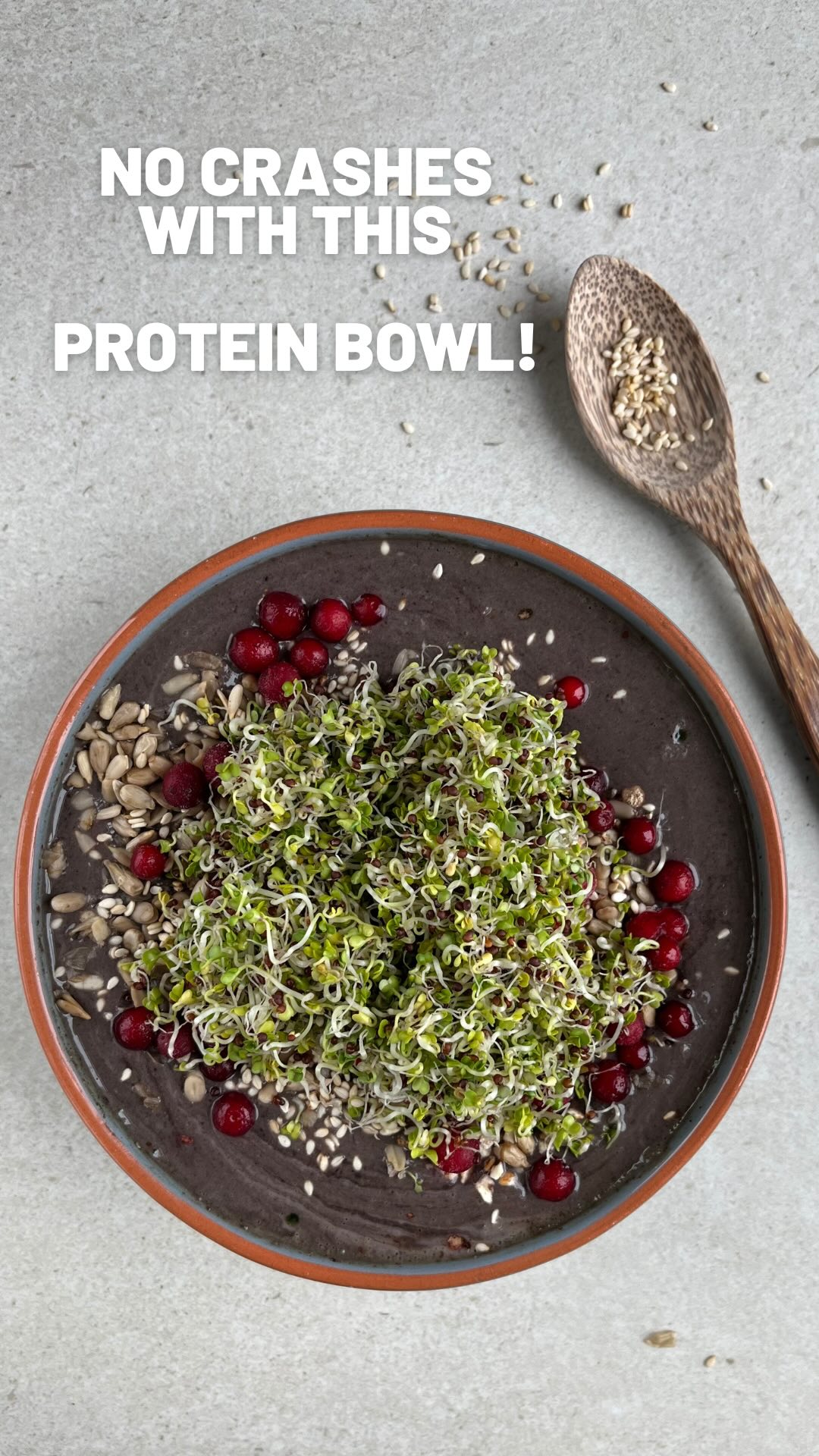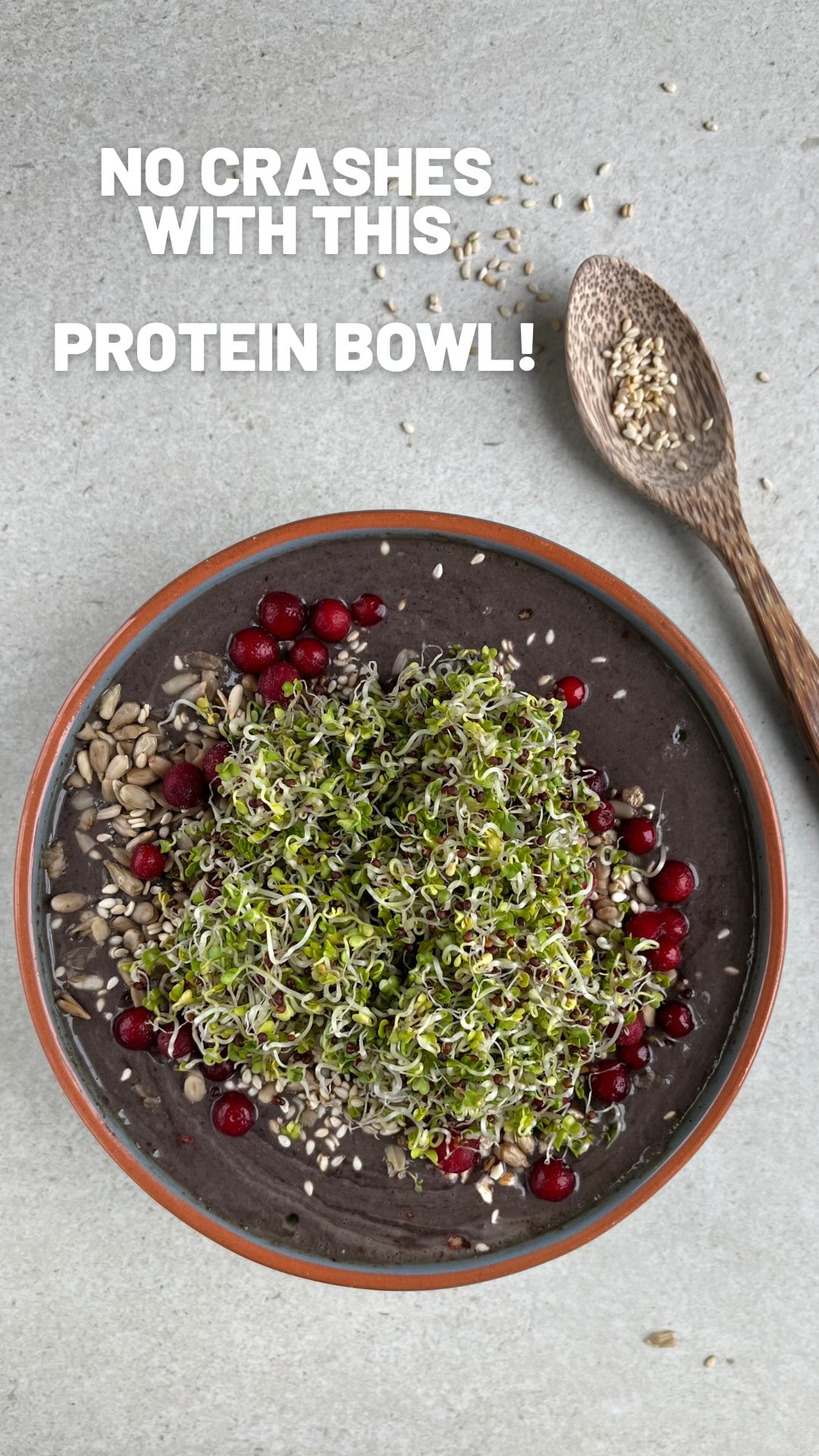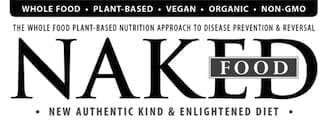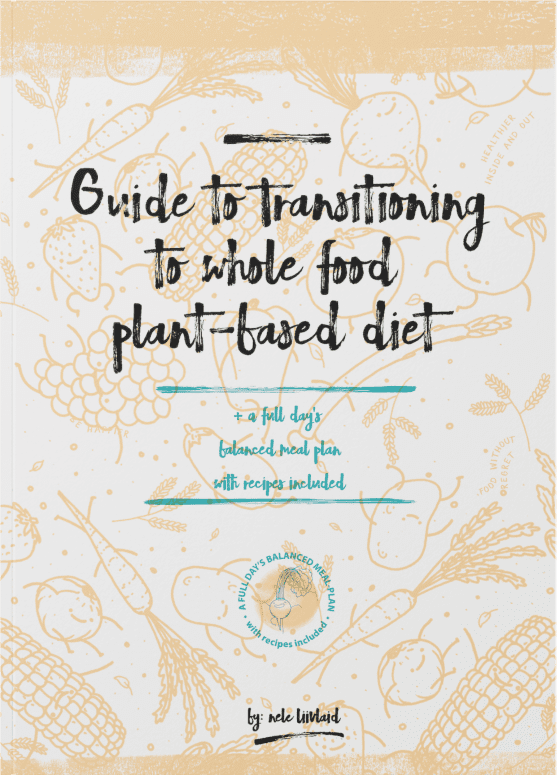Here’s a step-by-step guide of how to make vegan oil-free salad dressings. Furthermore, you’ll find low-fat, high-fat, low sugar, and low glycemic salad dressing recipes.
Let me start by saying that it’s very easy to make vegan oil-free salad dressings. Once you’re familiar with the basic steps and ingredients, you’ll soon be an expert and able to combine your own delicious dressings with minimal effort.
Table of contents
- How to Make Vegan Oil-Free Salad Dressings
- STEP 1: Choose a base aka the main ingredient
- STEP 2: Pick an acidic agent
- STEP 3: Choose herbs and spices
- STEP 4: Add extra umami
- STEP 5: Include something sweet (if necessary)
- STEP 6: Choose a liquid for thinning the dressing (if necessary)
- How to Mix and Match
- Vegan Oil-Free Salad Dressing Recipes
- Why Would You Consider Making Oil-Free Salad Dressings?
- Whole Olives vs Olive Oil
Feel free to PIN the below image!
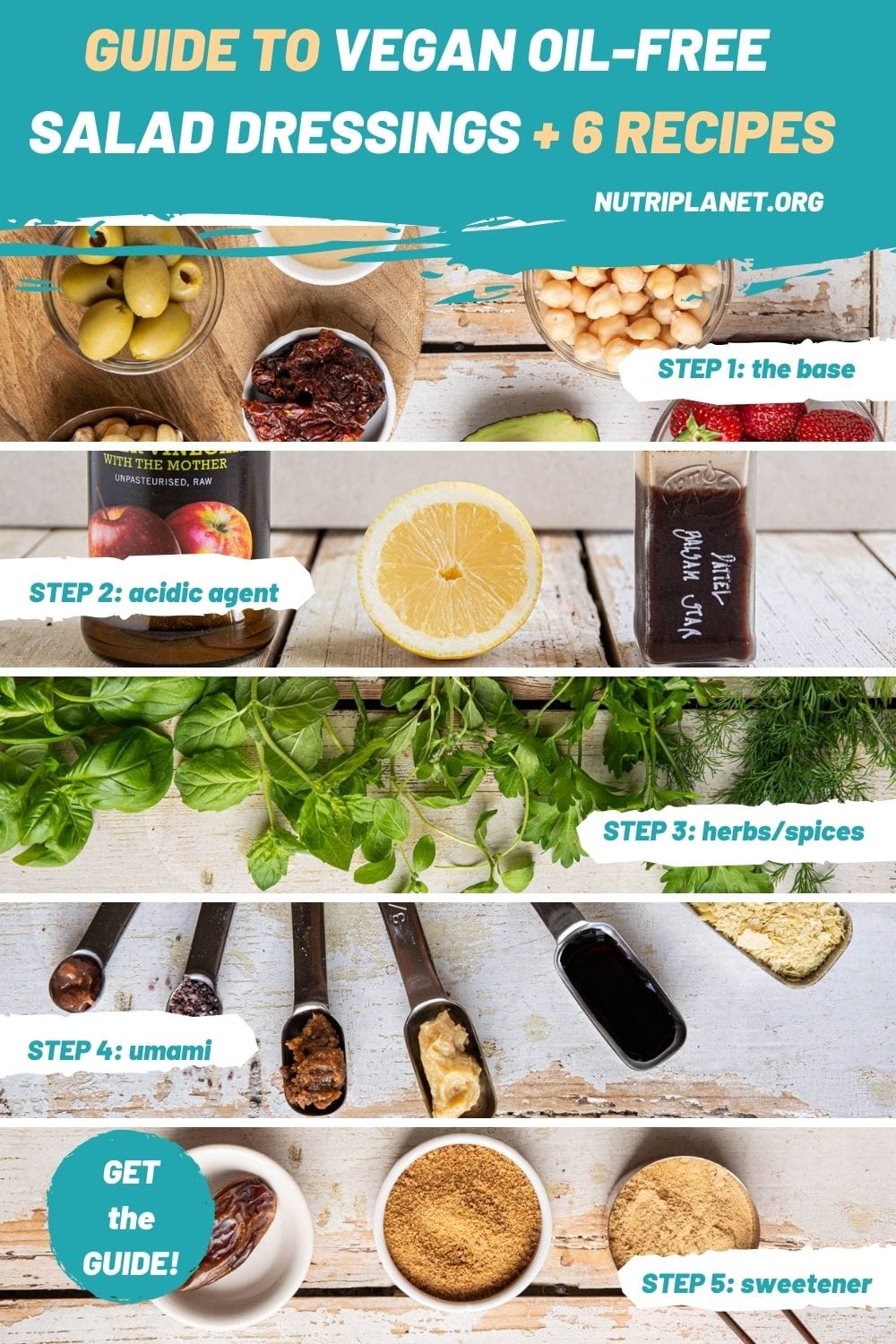
How to Make Vegan Oil-Free Salad Dressings
Here’s a brief overview of the steps of making vegan oil-free salad dressings:
- Step 1: Choose a base aka the main ingredient
For example, legumes, vegetables, nut and seed butters, plant yogurt, silken tofu, avocados, olives, berries and fruits, miso.
- Step 2: Pick an acidic agent
These include lemon juice, balsamic vinegar, wine vinegar, apple cider vinegar, sauerkraut juice.
- Step 3: Choose herbs and spices
Dill, parsley, coriander, basil, chili, mint, mustard, garlic (fresh and powder), onion, powder, wasabi, horseradish (fresh and powder), cinnamon, ginger, turmeric, thyme, oregano, rosemary, black pepper.
- Step 4: Add extra umami (optional)
Tamari, shiro miso or dark miso, nutritional yeast, black salt aka kala namak salt, umeboshi paste.
- Step 5: Include something sweet (optional)
Fruit juice or whole fruits, vegetable juice or whole vegetables, oven baked or steamed veggies, dried fruits like figs and dates, mesquite or Peruvian carob, date sugar, coconut sugar, stevia, erythritol.
- Step 6: Choose a liquid for thinning the dressing (if necessary)
Water, liquid from boiled beetroot, fruit and vegetable juices.
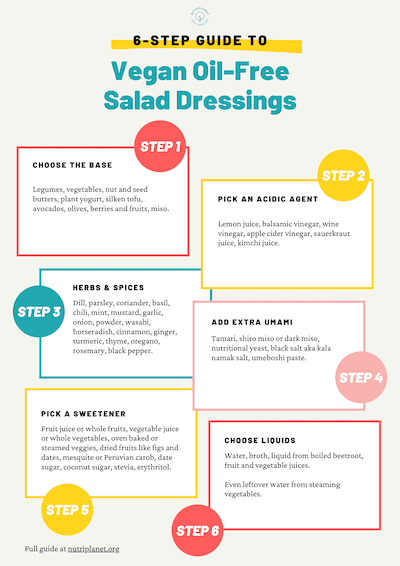
Now, let’s dig deeper into the above steps to making delicious vegan oil-free salad dressings!
The below video is great for visual learners!
STEP 1: Choose a base aka the main ingredient
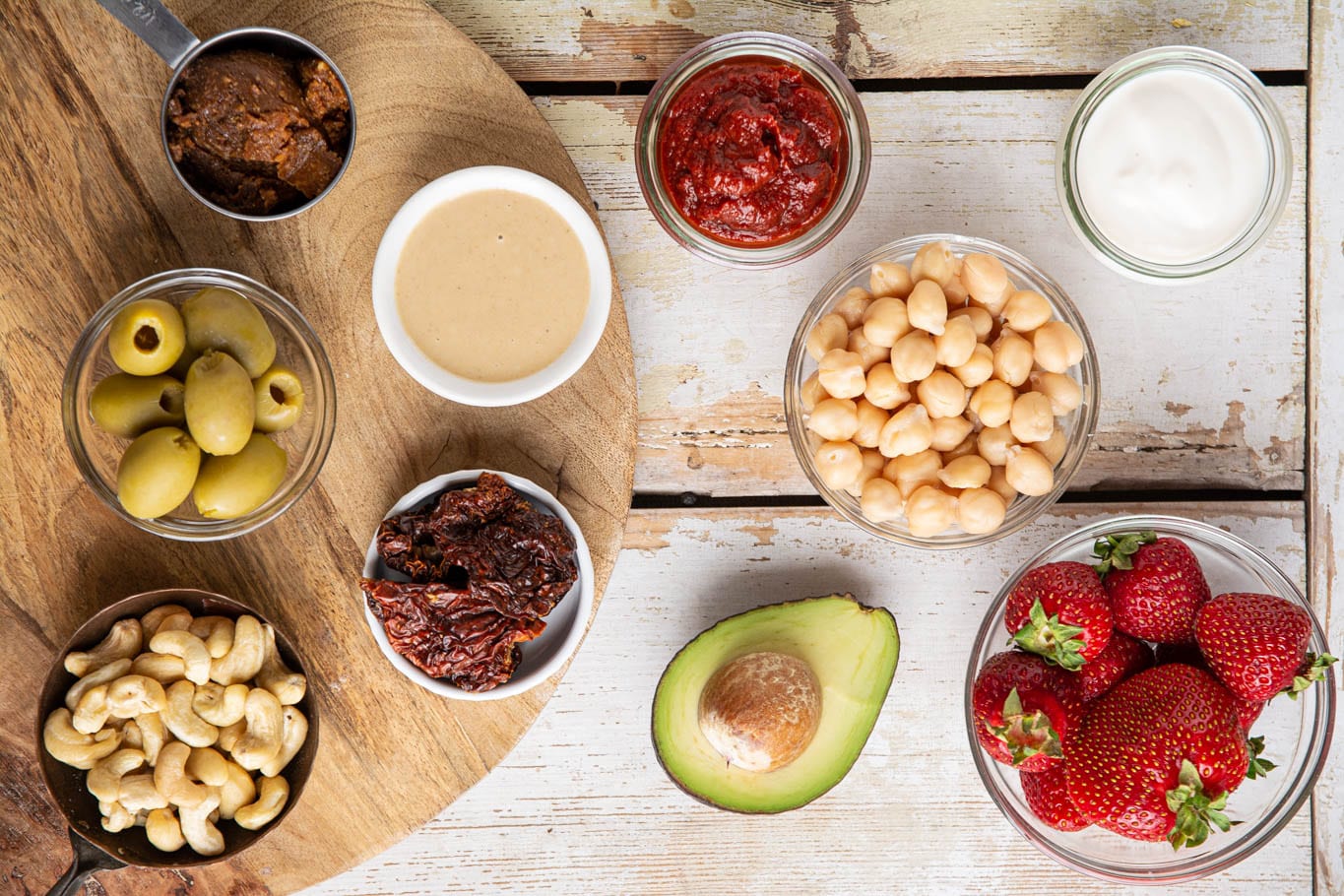
As you know, in oil-based salad dressing recipes, the main ingredient is oil. So, what do we substitute it with in oil-free versions? Not to worry though as there are plenty of nutritious alternatives to choose from.
Pick from the following options:
- Cooked and pureed legumes (chickpeas, broad beans, black beans, navy beans, kidney beans, lentils, peas, edamame).
- Steamed, boiled or oven baked and then pureed vegetables (sweet potato, potato, summer squash, winter squash, eggplant, bell pepper, onions, mushrooms, tomatoes).
- Nut or seed butter (peanut, almond, cashew, hazelnut, sesame aka tahini, walnut).
- Whole nuts or seeds, soaked and pureed (cashews, walnuts, hulled hemp seeds, sunflower seeds).
- Plant yogurt (soy, almond, cashew, coconut, oat) and silken tofu.
- Avocados, pureed.
- Berries or fruits, pureed (olives, strawberries, raspberries, blueberries, mangoes, oranges, kiwis, fresh figs).
- Miso (shiro miso or dark miso). It’s worth mentioning that miso alone is too intense. So, use it in combination with the other base ingredients.
You can either choose one or mix and match the above options. It’s evident that leaning towards legumes, fruits, vegetables, miso, silken tofu, and yogurt will give you a low-fat dressing. At the same time, using nuts, seeds, or avocado as a main ingredient, will result in a dressing higher in fats.
How much to use?
It greatly depends on which base ingredient you’re going to use but here are the basic guidelines for 1 cup of ready oil-free dressing:
- Legumes: measure out 1 cup (165g, 5.8oz) of whole cooked legumes. As their consistency varies i.e., some beans are thicker than the others, you might need to adjust the ratio. Then, use about 145 grams or 5.1 ounces (½ cup + 1 tbsp. + 2 tsps.) of liquids including ingredients like lemon juice, tamari, balsamic vinegar etc.
- Watery vegetables like summer squash and eggplant: use 260 grams (9.2oz) veggies (raw weight) and bake them in the oven. Then, blend the veggies with about 1/3 cup of liquids. However, should you add drier ingredients like nutritional yeast, denser veggies like carrots, and/or nut butter, increase the liquid volume accordingly.
- Starchy vegetables like sweet potato and winter squashes: measure 100 grams (3.5oz) raw starchy veggies and boil them with a small onion in ½ cup + 1 tbsp. of liquid (water, plant milk or the combination of the two). Blend in a garlic clove, tamari or salt and some soaked cashews or nutritional yeast.
- Nut butters: use 6 tbsps. of nut butter and ½ cup + 2 tbsps. liquids. Remember to add more liquids, if you’re going to use dry ingredients like powdered herbs and spices or nutritional yeast.
- Plant yogurt and silken tofu: depending on the thickness of your yogurt, you probably won’t need to add any extra liquids except for lemon juice, apple cider vinegar, or balsamic vinegar. Feel free to adjust if you use dry ingredients in your dressing. NB! Remember to blend the silken tofu for a silky-smooth result.
- Miso with nut butters: use 4 tablespoons of miso and 4 tablespoons of nut butter with ½ cup + 1 tbsp. + 1 tsp. (140g, 4.9oz) of liquids including lemon juice and/or balsamic vinegar/ACV.
- Fresh fruits and berries: measure 195 grams (6.9oz) of fresh fruit or berries and use 2 tablespoons of liquid acidic agents or flavour boosters like tamari, date syrup, lemon juice, apple cider vinegar, and/or balsamic vinegar.
STEP 2: Pick an acidic agent
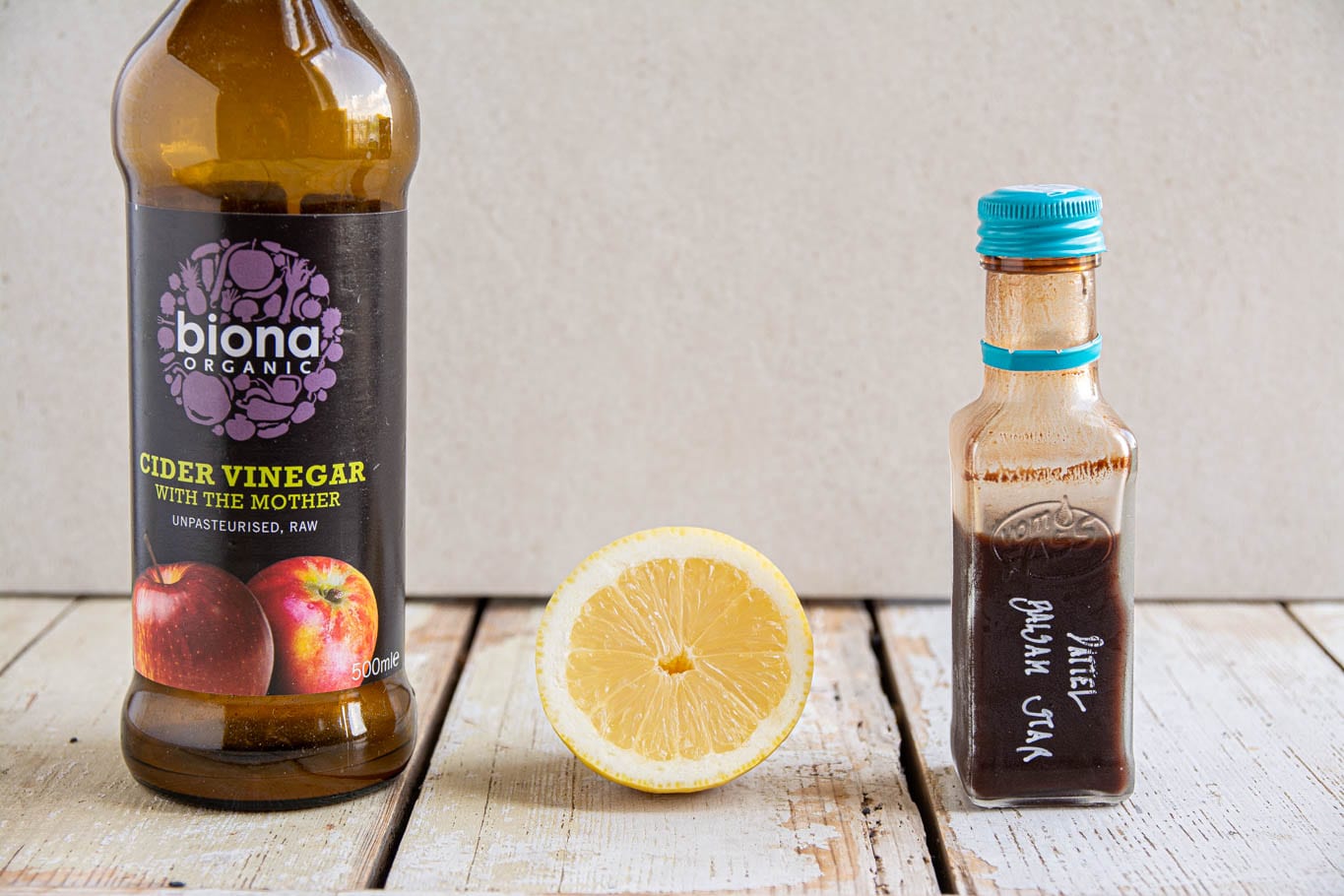
Acidic agent will give your oil-free salad dressing a pungent boost. You can go for:
- Fresh lemon or lime juice
- Apple cider vinegar
- Balsamic vinegar
- Wine vinegar
- Sauerkraut juice (or any lacto-fermented vegetable juice)
How much to use?
Usually a tablespoon is enough in a cup of dressing.
STEP 3: Choose herbs and spices
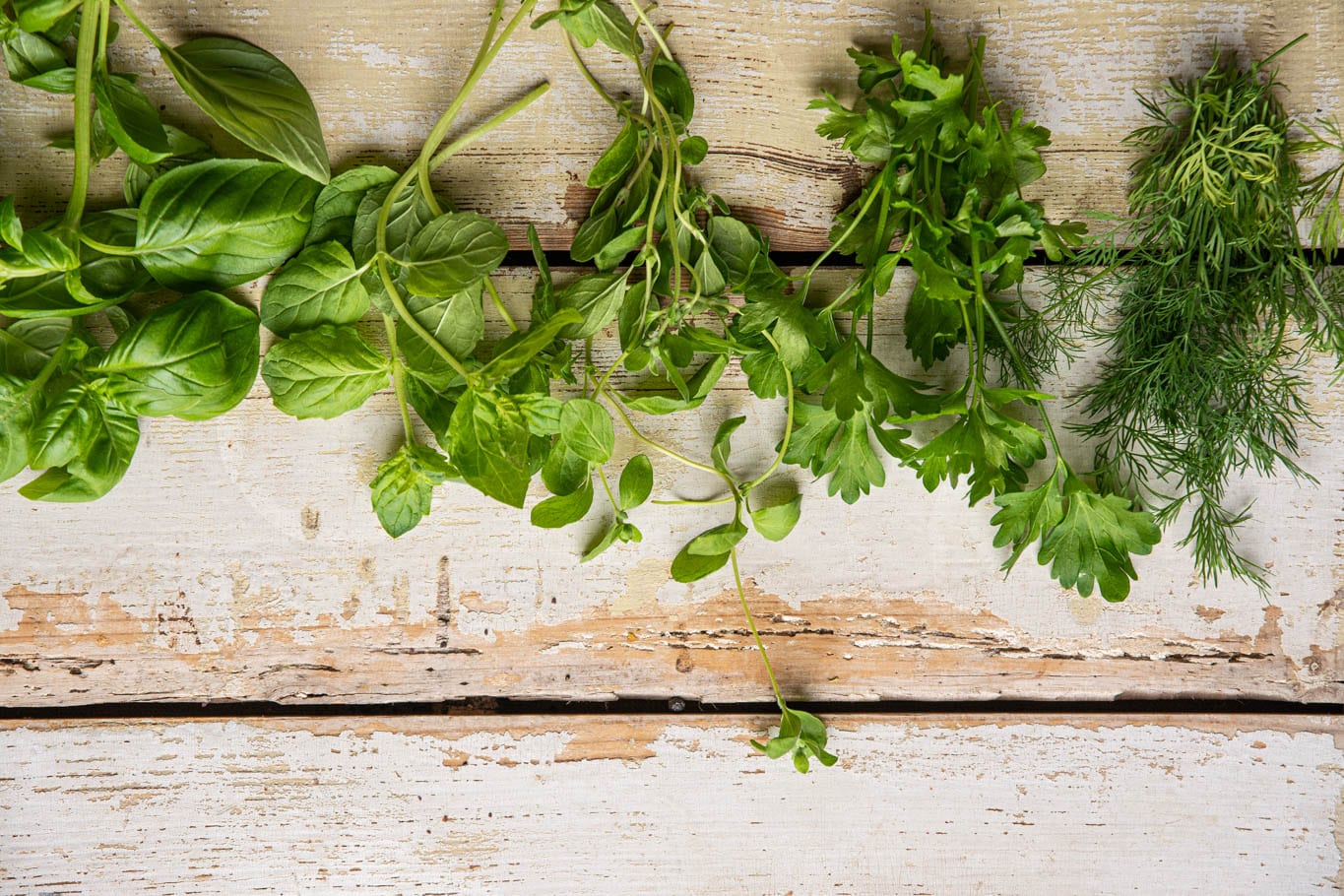
Herbs and spices will make your dressing stand out. You can go for Mediterranean, Indian, Mexican, Japanese etc. flavours. There’s plenty to choose from:
Dill, parsley, coriander, basil, chili, mint, mustard, garlic (fresh and powder), onion powder, wasabi, horseradish (fresh and powder), cinnamon, ginger, turmeric, thyme, oregano, rosemary, black pepper.
Alternatively, use a store-bought or homemade spice mix like my Indian Spice Mix.
How much to use in a cup of dressing:
- Fresh herbs: a handful or more
- Intenser fresh herbs e.g., rosemary, thyme and oregano: ½ tablespoon
- Dried herbs: 1 teaspoon
- Strong spices like chili and peppers: a pinch
- Fresh garlic: ½-1 clove
- Indian spice mix: 1 teaspoon (ore more), ground
STEP 4: Add extra umami
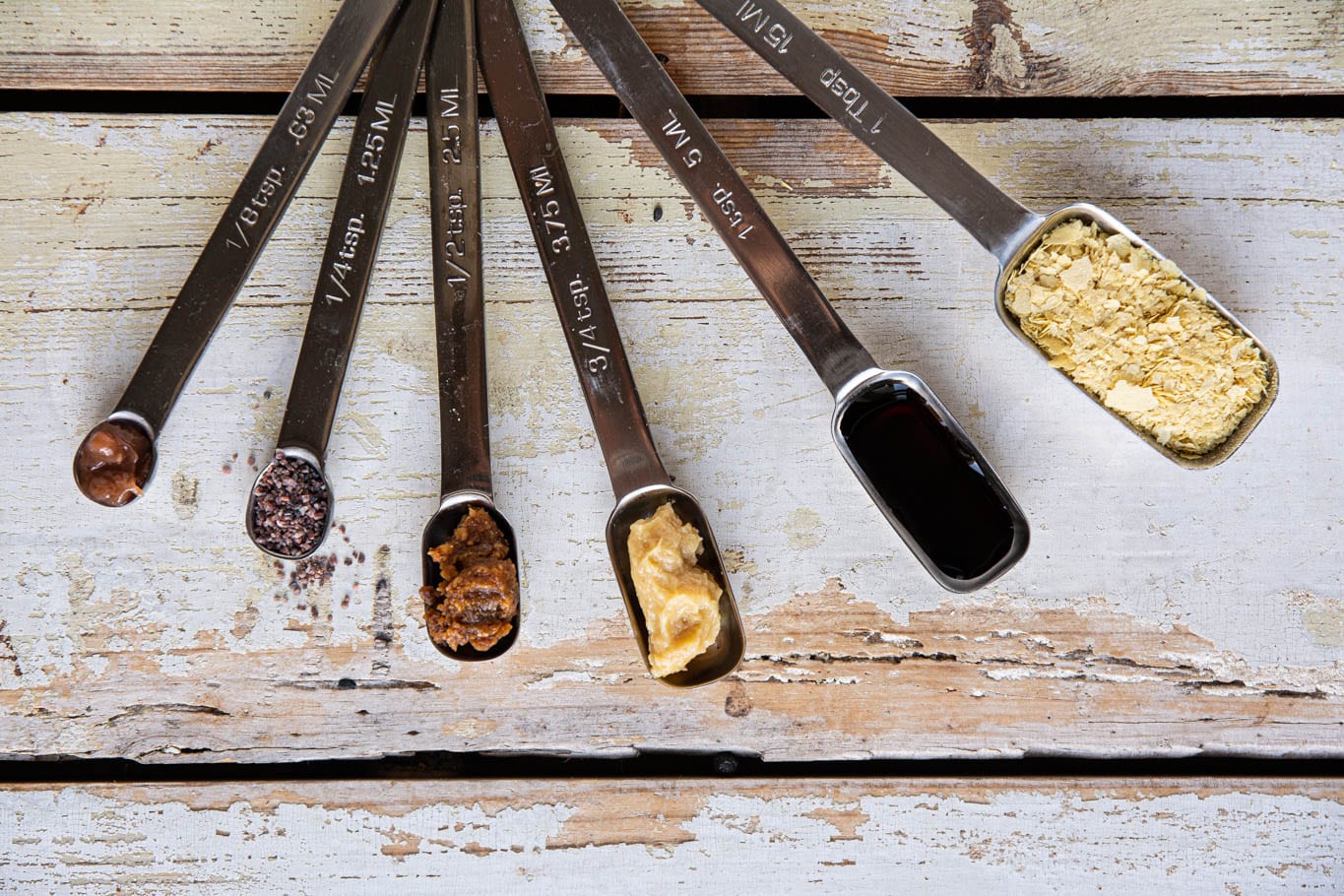
Umami is the core fifth taste. It’s noteworthy that scientists identified umami taste receptors on the human tongue in 2002. The other four basic tastes are sweet, sour, bitter, and salty. So, umami is an inherent taste universally enjoyed.
What’s different about umami taste is that it spreads across the tongue, it lasts longer than other basic tastes, and it provides a mouthwatering sensation.
Here’s what you can add to your oil-free salad dressings for some umami taste:
- Tamari is one of five popular types of Japanese soy sauces known as shoyu. Shoyu is made by fermenting soybeans — and sometimes wheat — using a special fungus (koji) and brine (moromi). [1] Compared with most soy sauces, tamari is darker, contains little to no wheat, and has a stronger umami flavour. [1, 2]
- Shiro miso or dark miso, which is a traditional Japanese seasoning produced by fermenting soybeans with salt and kōji (the fungus Aspergillus oryzae) and sometimes rice, barley, seaweed, or other ingredients.
Shiro miso has a sweet cheesy taste and, in my opinion, is a good substitute for nutritional yeast. - Nutritional yeast
- Black salt aka kala namak salt
- Umeboshi paste is basically pickled plum puree. It is a tart and tangy seasoning that can be used to enliven sushi, dips, dressings, spreads, and sauces. Ume paste made of ume plums, sea salt and shiso leaves.
How much to use?
Again, it depends on which ingredient you use, but here are the approximate quantities in a cup of dressing:
- Tamari and miso: 1 tablespoon
- Nutritional yeast: 1-3 tablespoons
- Black salt: 1 teaspoon or less
- Umeboshi paste: ½-1 teaspoon
STEP 5: Include something sweet (if necessary)
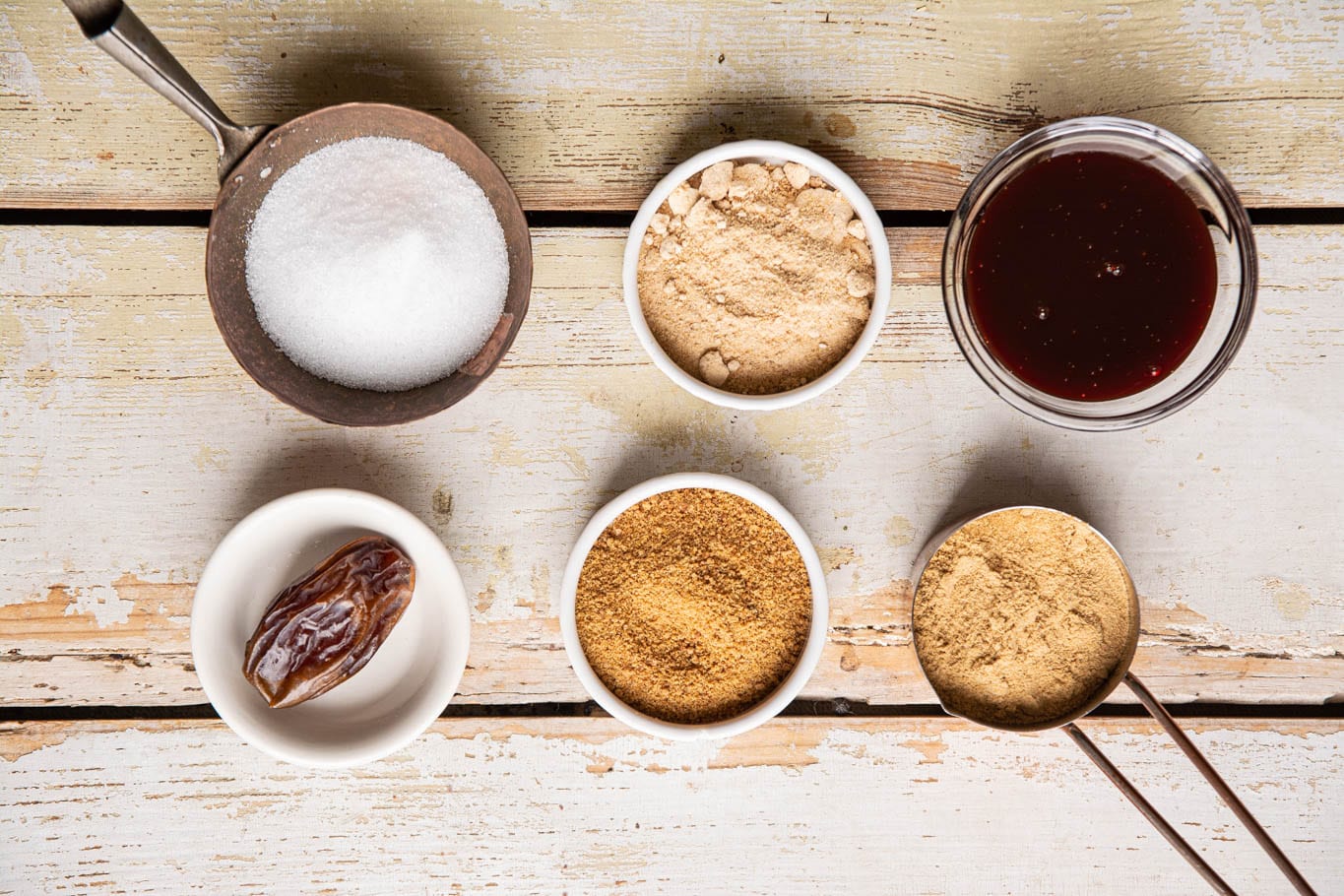
Sometimes a tiny pinch of a sweet taste in your oil-free salad dressings goes a long way but it’s not always necessary. Sweetness can come from:
- Fruit juice or whole fruits (orange, apple, pear, fresh figs).
- Vegetable juice or whole vegetables (carrot, beetroot, winter squashes).
- Oven baked or steamed veggies (zucchini, sweet potato, carrot, pumpkin).
- Dried fruits like figs and dates.
- Mesquite or Peruvian carob.
- Date sugar, date syrup, coconut sugar, stevia, erythritol.
How much sweeteners to add?
To be honest, it totally depends on your tastebuds and what you picked as main ingredients. In case your dressing is made with sweet potato, you probably won’t need to use anything on top of that. However, here’s how much I would use in a cup of dressing:
- Fruit and vegetable juice: ¼ cup or less
- Dried fruit: 1 fruit or less
- Mesquite: 1 tablespoon or less
- Sugars and syrups: about 1 teaspoon
To find out more about how to add healthy sweet taste to your dressings and other dishes, read my article on low glycemic sweeteners.
STEP 6: Choose a liquid for thinning the dressing (if necessary)
Finally, you’d need to add some extra liquid into your oil-free salad dressing if you choose a quite thick base. For example, think of legumes, nut butters, avocado, miso, and starchy veggies. On the other hand, should you choose to make a yogurt-based dressing, you most probably don’t need to add anything to make it thinner. Here’s what you can use:
- Broth (also leftover water from steaming veggies). However, broth is not recommended in fruit or berry-based salad dressings.
- Water.
- Liquid from boiled beetroot.
- Fruit and vegetable juices (cucumber, orange, beetroot, carrot).
How much liquids should you add?
It’s simple really – pour in enough for desired consistency! Some people prefer thicker and others thinner salad dressings. However, here are some tips you can bare in mind:
- Starchy vegetables and legumes: start by almost covering the ingredients. Then process and add more if necessary.
- Watery vegetables like summer squash: cover by half and then gradually add more until you have desired consistency.
- Very watery ingredients e.g., strawberries and kiwis: don’t add any extra liquids.
Accidentally added too much and made your salad dressing runnier than you wanted? No worries, you can fix this in several ways:
- First option is to blend in some more of the main ingredient: beans or chickpeas, starchy veggies, nuts or nut/seed butter, avocado.
- Secondly, thick plant yogurt will be suitable in almost any dressing (except vinaigrettes).
- Thirdly, blend in some ground chia seeds, psyllium husks or psyllium husk powder.
How to Mix and Match
In case you’re new to oil-free dressings or you simply struggle to figure out the best options, here are some delicious combinations:
- Miso + tahini + lemon juice + garlic
- Miso + yogurt + lemon juice + turmeric + horseradish
- White beans + lemon juice + mustard + garlic + tamari
- Chickpeas + yogurt + peanut butter + lemon juice + mustard + turmeric + black salt
- Avocado + edamame beans + lemon juice + garlic + tamari or miso + black pepper
- Avocado + lemon juice + basil
- Strawberries + avocado + lemon juice + garlic + mesquite + ginger
- Sweet potato + potato + onion + garlic + tamari + nutritional yeast
- Eggplant + carrot + zucchini + peanut butter + garlic + lemon juice + turmeric + black salt
- Peanut butter + miso + lemon juice + garlic + Indian spice mix + turmeric
Vegan Oil-Free Salad Dressing Recipes
Let’s say that you don’t want to figure out the combinations yourself and prefer ready-made recipes. Feel free to choose from the following vegan oil-free salad dressing recipes that use either miso, beans, chickpeas, vegetables, yogurt or berries as a main ingredient.
White Bean Dressing
Learn how easy and quick it is to make plant-based oil-free white bean dressing to top your salads or Buddha bowls. You’ll need a blender and 5 minutes of your time.
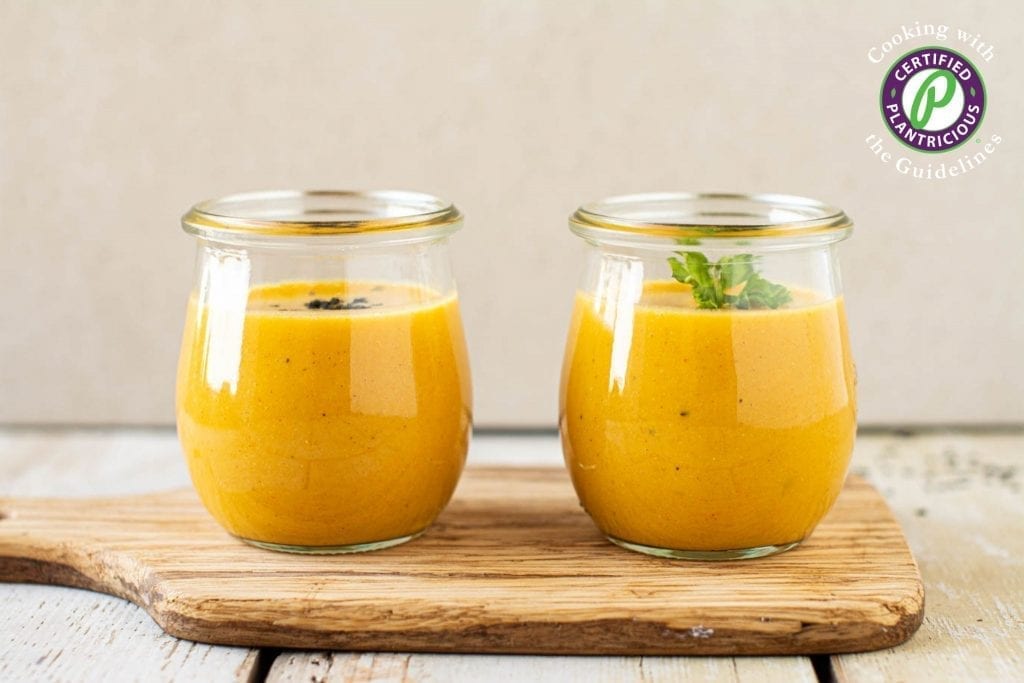
Homemade Marinara Sauce
Here’s a simple and flavourful homemade marinara sauce. On top of that it’s also oil-free. It’ll be extremely convenient to grab this sauce from the fridge and use it on pizzas, pastas, salads, and as a dip.
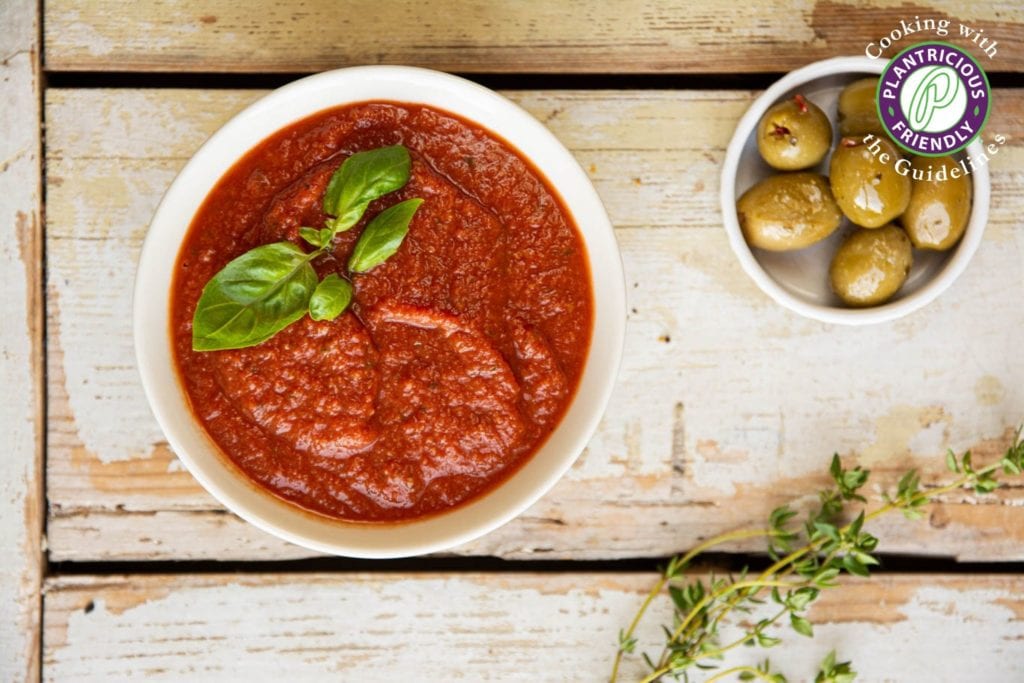
Cheesy Chickpea-Tahini-Yogurt Dressing
Let’s make an easy and quick oil-free vegan salad dressing with tahini and chickpeas that effortlessly makes your meals complete. It gives this on-spot freshness and richness to your abundant or simple salads. You just need a blender and 10 minutes of your time!
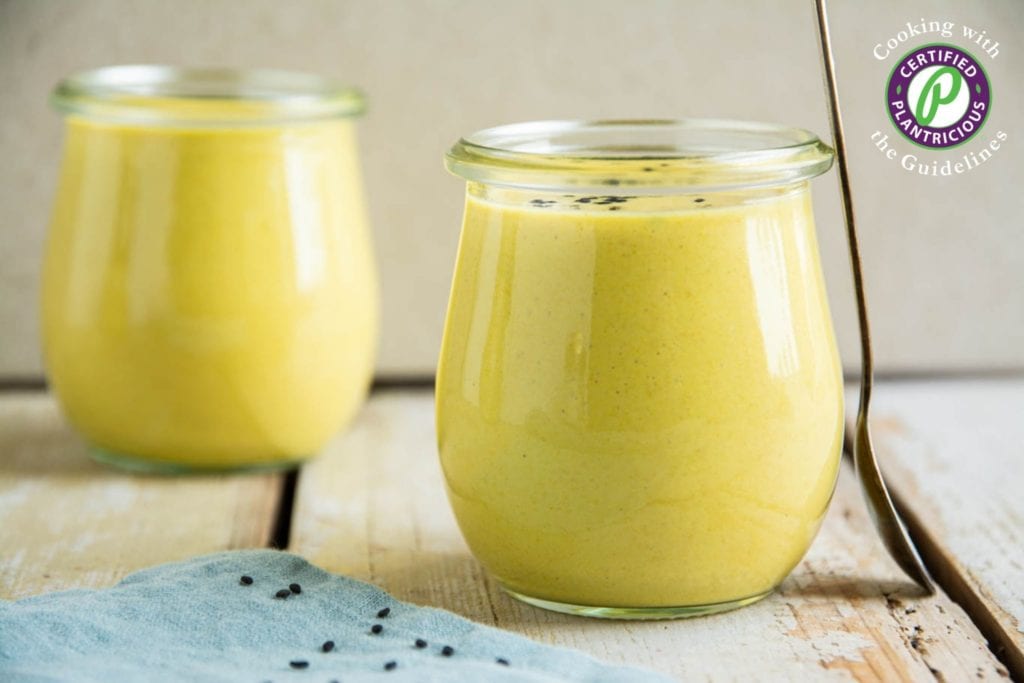
Vegan Salad Dressing with Oven Baked Veggies
Simple and delicious oil-free vegan salad dressing made with oven-roasted eggplant, zucchini, and carrot. What’s more is that this dressing recipe is also gluten-free and low glycemic.
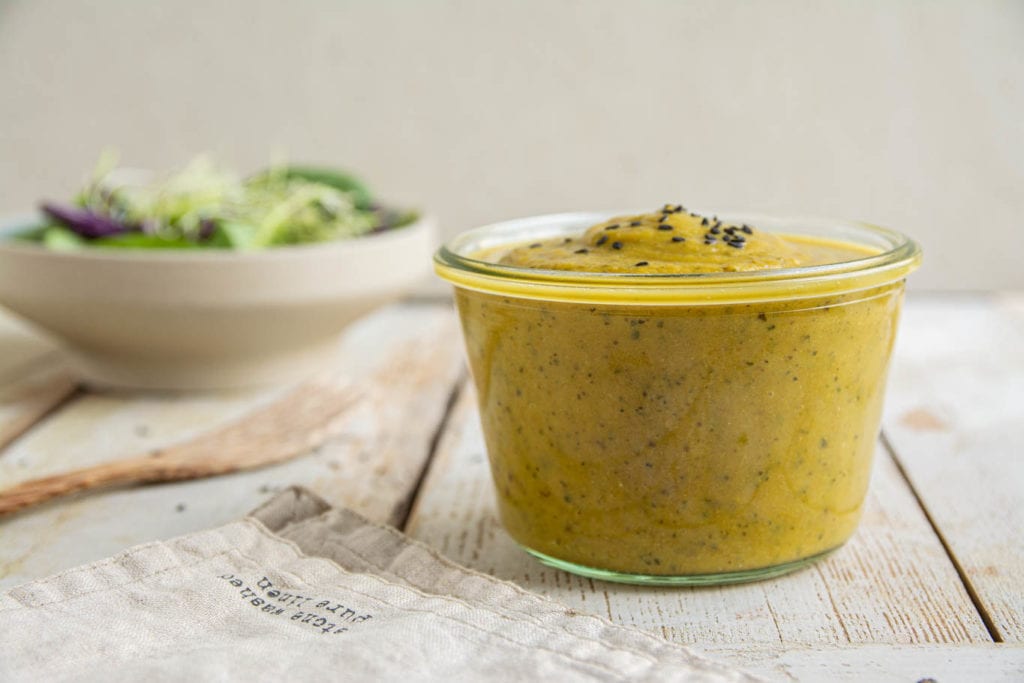
Strawberry Vinaigrette
Learn how to make an easy oil-free strawberry vinaigrette dressing for salads. You’ll need a blender or an immersion blender, a handful of ingredients and 10 minutes of your time.
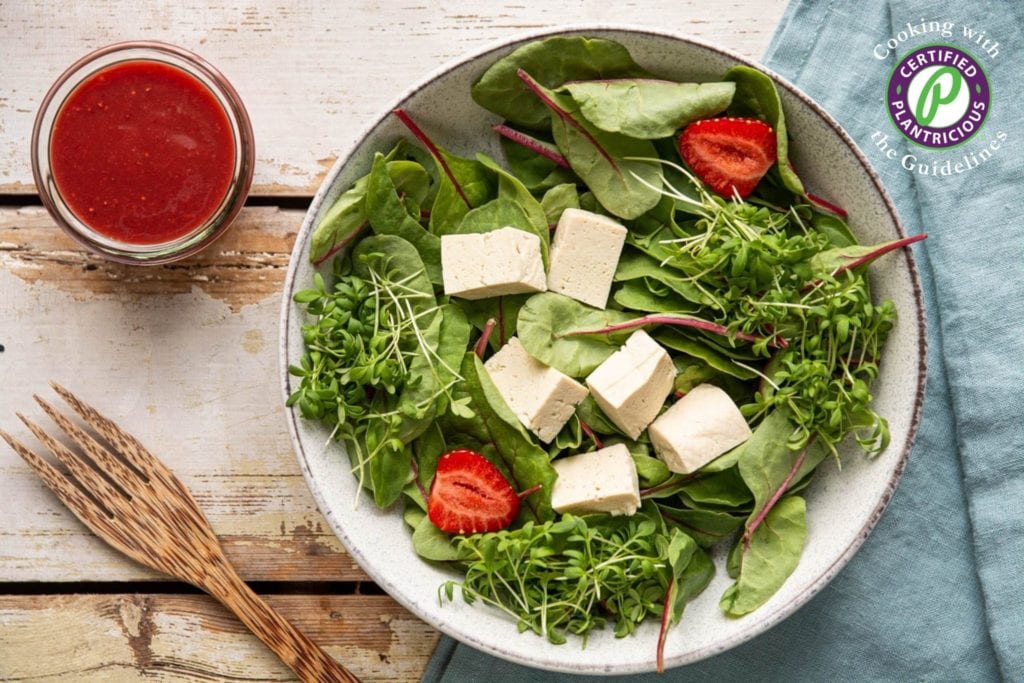
Moreover, you’ll find two more recipes in the below video! These are my favourite go-to Miso-Tahini Dressing and herby Cashew-Miso Dressing.
Why Would You Consider Making Oil-Free Salad Dressings?
Some doctors refer to heart-healthy oils. However, is there really such a thing? Most people do not have problem understanding the adverse effects of highly processed foods like sugar and refined flours. However, for some reason, when it comes to oils, people tend to get very protective. In reality, oils are as processed as sugars and refined flours.
Think of how oils are made. Let’s take olive oil as an example. It all starts with whole olives that are very beneficial to us. It’s noteworthy that whole olives contain 11-15% of fat, the majority of which are monounsaturated fats. The latter is what many people struggle to get into their diets unless they eat olive oil straight up. Other good sources of monounsaturated fats are avocados, almonds, hazelnuts, and peanuts.
So, by the time you get the oil extracted from the olives, you’re left with the mere 11-15% of their weight. This means that 89-85% of the olives’ goodness is left behind i.e., the fibre, and most of the vitamins and minerals.
Furthermore, whole olives are a good source of vitamin E, iron, copper, calcium, and antioxidants. That being said, one study showed that eating a pulpy residue from olives significantly increased blood levels of glutathione, one of the most powerful antioxidants in your body. [3, 4]
Whole Olives vs Olive Oil
It’s widely known that oil has very high caloric density with no fibre. For example, 1 gram of oil contains 9 kcal whereas 1 gram of sugar has 4 kcal. So, even adding just a tablespoon of olive oil onto your salad, you’d get 120 kcal from that tablespoon. That is 120 extra calories with no nutrition and fibre, simply fat!
1 tablespoon (13 grams) of olive oil contains 119.3 kcal, 13.5g fats, 1.9mg vitamin E, 8.1µg vitamin K, 0.1mg iron, 0.1mg calcium, and 0.1mg potassium.
In comparison, the same weight of olives contains 18.9 kcal, 2g fats, 0.1g protein, 0.4g fibre, 51.1IUs vitamin A, 0.4µg folate, 6.8mg calcium, 0.1mg iron, 0.5mg phosphorus, 5.5mg potassium, 0.1µg selenium, 1.4mg magnesium as well as 0.5mg vitamin E and 0.2 µg vitamin K.
Imagine if you were offered powdered sugar to go with your buffet food. I assume that most people would find it rather odd. However, at the same time, people think it’s fine to have oil poured over every dish.
For deeper understanding on how oil can negatively affect your health, I suggest the following resources:
- Olive Oil Is Not Healthy by Michael Klaper MD
- Interpreting: NEJM Study Promotes Olive Oil and Dismisses Low-fat Diet
- Mic the Vegan’s researched video with citations Oil: The Vegan Killer
Disclosure: this post contains affiliate links. As an Amazon Associate I earn from qualifying purchases. For every purchase made from the links in this post, you’ll be able to support my work. So you can look after your health, and contribute to my mission at the same time. Thank you!
